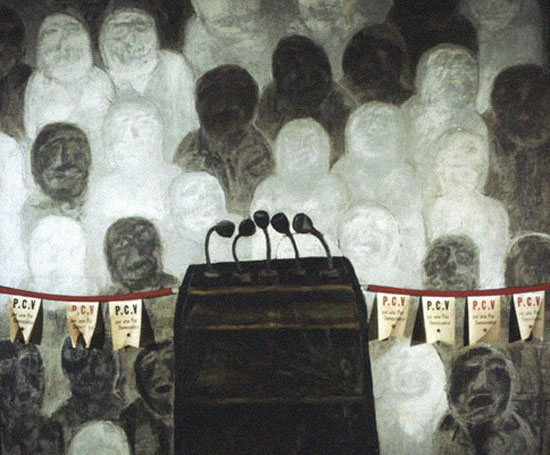The December issue of e-flux journal has just gone live. Guest-edited by Coco Fusco, the issue focuses on the state of art and politics in Cuba, and features several translated pieces by Cuban artists, writers, and activists. Check out an excerpt from Coco Fusco’s editorial below. The full issue can be read here.
Most Cuban intellectuals and artists say little about political rights, but they have been subject to restrictions as to what they can do and say in public and whether they can represent their country abroad since the Revolution began. Those who ruffle feathers by speaking out risk professional suicide, imprisonment, and exile, and rarely find support among their peers. They face a formidable apparatus and the incredulity of foreigners who see Cuba as the embodiment of utopian leftist ideals. In the 1960s and ’70s, the state sought to excise “bourgeois” tendencies among intellectuals educated before 1959, to root out the sectarian tendencies of academics who published journals critical of centralized state socialism, to undermine cultural activities that focused on minority identities or religion, and to survey artists who fraternized with foreigners. To that end, in the 1970s, Cuba experimented with placing all culture under direct control of the Communist Party, blacklisted many well-known intellectuals, criminalized “Western” influence, and developed pseudoscientific categories to pathologize “excessive” intellectualism and homosexuality. By the 1980s, the cultural sector had acquired its own institutions and cadres of “experts,” and younger generations that had been educated within the revolutionary system began their professional lives and ushered in what is widely considered a cultural renaissance. The decline of socialism at the end of the 1980s destabilized Cuba economically and left the country politically isolated, which led to another backlash against intellectuals and artists who were clamoring for reforms and greater autonomy. During the economic crisis of the 1990s, the Cuban government countered the impact of a mass exodus of artists and intellectuals with a peace offering to those who stayed—they could earn hard currency and travel, provided that they did not rock the boat politically. From time to time, artists or musicians would fall out of favor, but in general, they maintained their distance from opposition political activists, who were considered US-backed mercenaries by Cuban authorities. Visual artists turned their attention to sales and travel, writers who wanted to publish fiction about societal problems sought out lucrative foreign contracts, and rappers who drew large crowds but had no ties to government agencies became the principal mouthpieces of dissent. More recently, the nonconformist worlds of disaffected youth subcultures, dissident bloggers, self-taught artists, and politicized rappers are the principal sites of oppositional cultural practice and demands for greater expressive freedom. Their increasing visibility abroad and the stridency of their voices may be emboldening what has for a long time been a rather timid intellectual milieu reluctant to speak out against state censorship and repression.
Image: Antonia Éiriz, A Tribune for a Democratic Peace, 1968.
